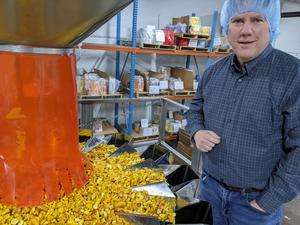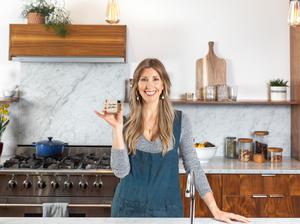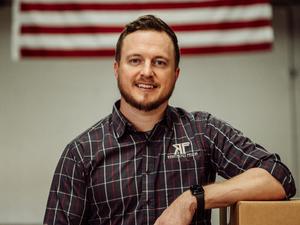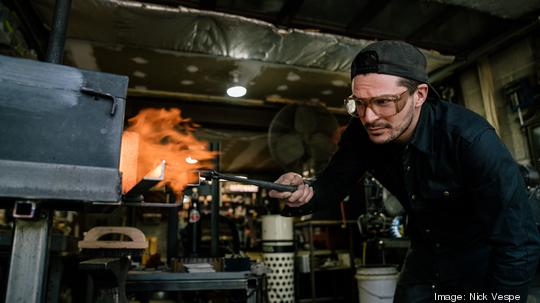
From the time he was a child, Steve Pellegrino was fascinated with creating things. That early passion eventually translated into his eponymous knife business, Pellegrino Cutlery. Just a few years old, the company already counts some of Philadelphia's top chefs as clients, including Michael Solomonov of Zahav fame.
While Pellegrino is gaining traction by word of mouth, getting to that point took years of training – and a few turns into other ventures. Thinking he’d follow in his maternal grandfather’s footsteps, Pellegrino – who grew up in the central New Jersey town of Flemington – pursued a degree in graphic design at the School of Visual Arts in New York. But while studying there, he discovered his passion wasn’t in graphic design, but rather the more tactile. After finishing school, he launched a prop house in Lambertville, New Jersey.
During that time, Pellegrino became fascinated with the world of knifesmithing thanks largely to the proliferation of Instagram. When his prop house didn’t prove a success, he turned his attention to smithing. Around 2015 Pellegrino ventured to Portland, Oregon, where he undertook an apprenticeship with custom straight razor brand Portland Razor Co.
Finding he was still drawn to knives thanks to a longtime interest in cooking, he ultimately decided that was where his future lie. “There were so many facets to it, all things that I've always loved: science, art, chemistry, engineering,” he said of bladesmithing.
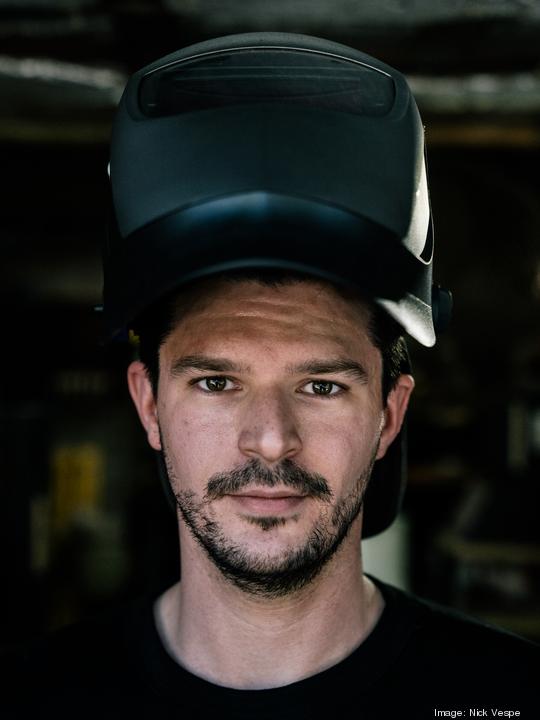
After that apprenticeship, Pellegrino moved back east, landing in Philadelphia and began honing the craft on his paternal grandfather’s Bucks County property in Upper Black Eddy.
In one of the outbuildings there, he created what today serves as his workshop. “It was try and have a little bit of success, have a lot of failure…” he said, noting that process helped him find his voice in the industry.
The business grew organically from there. He tested his own work and sought the input of chefs, which was no easy feat. Eventually his persistence paid off. He got not only feedback, but eventually forged relationships with some of the region’s top chefs, including Dominic Piperno of Collingswood, New Jersey, restaurant Hearthside. Soon, word spread.
“Word of mouth from chef to chef was like solid gold, because you can come up with the most genius marketing in the world, but unless another chef tells you that this knife is worth trying, it's not going to happen,” Pellegrino said.
He’s added some big names to his client roster, including Solomonov – one half of CookNSolo Restaurants, which includes Zahav, Federal Donuts, and Goldie – and more recently Jesse Ito of Royal Izakaya.
Home chefs also make up a sizable portion of Pellegrino’s book of business, which he estimated grew about 50% over the past two years. He attributes that in part to the Covid-19 pandemic when more people were home, cooking and choosing to invest in their kitchen tools.
Sales of his knives – which include French and Italian chef’s knives, a petty and a cleaver – are almost exclusively online, though he does have retail partners in Virginia and New York, something he plans to expand upon.
His 8-inch gyuto – similar to a Japanese chef’s knife – is his top seller. “Eight inches is sort of the sweet spot as far as size. It's large enough to handle large work, but it's also not too much knife for the home cook,” Pellegrino said.
His knives can take weeks or even months to create and come with a price tag to match – they start at about $250 and run upwards of $1,500, though climb higher for custom creations.
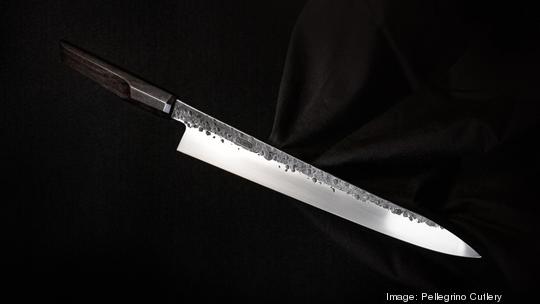
Pellegrino largely works in two materials: carbon steel and stainless steel. The latter is more familiar for home cooks, but carbon steel is slowly gaining favor.
Pellegrino said what sets hand-forged knives apart from the commercial ones on the market is their function and durability, which can last a lifetime or longer if properly cared for.
“I think a good kitchen knife should feel natural in your hand. It should be an extension of your arm. You should almost forget that you're holding it – it should be very comfortable,” he said.
While much of the work is done by hand, Pellegrino does make prototypes so that a computer can do some of the basic steel cutting. Presently he does all of the work himself, but is looking to scale the business in time, including potentially bringing on an apprentice or other employees. His goal is to open his own brick and mortar where customers can shop and have their own knives sharpened. Pellegrino is also considering venturing into other kitchen tools.
“I think that one day very soon I plan on making a large jump into a bigger shop and I will be interested in hiring people that not just want a job but want to learn about this and be part of this community, because it's bigger than just work,” he said. “It's a bit more of a lifestyle, if I could even go so far as to say that.”
How did your graphic design background inform your knife designs?
There's a visual Gestalt to something. … And these are the types of things that I wanted my knives to become known for. They should almost teach you how to hold a knife properly if you're a home cook, as though you were a chef. Just the inherent nature of the tool would show you how to use it properly. I always enjoyed cars – I'm a car guy so I look at the lines on things. I want my knives to look like sports cars. I sort of took these elements and applied them.
How do you get the design elements on the knife blades?
Some of that is san mai or other laminates. And that's really in the construction of the steel. I wouldn't say that it's design only because I can't fully control how that turns out. San mai loosely translates in Japanese to three sheets or three layers. … Basically what I'm taking is different alloys that I'm welding together into a sheet of steel into this conglomerate of sheets and at the forging temperature, which is upwards of 1500 degrees, closer to 2000 degrees, steel behaves more like plastic, like taffy. I have a hydraulic press and different tooling that I can use to form that steel in different ways. In that process, it creates undulations, it upsets those interior sheets of steel … and will expose the movement within the steel.

